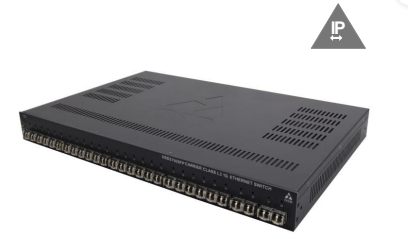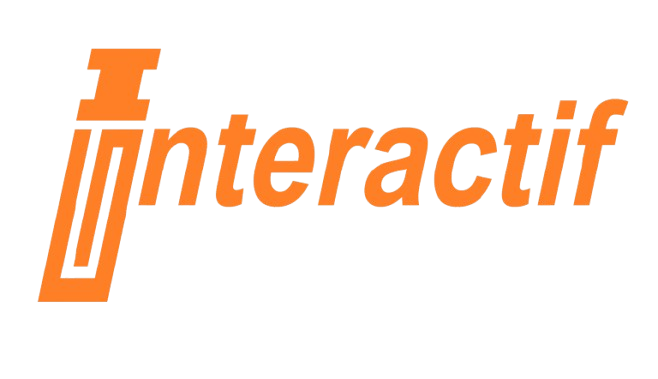NETWORK

OSD2890SFP MANAGED ETHERNET SWITCH 24 100/1000M SFP AND 4 x 10G TRUNK/UPLINK SFP
PRODUCT DESCRIPTION
- Complies with IEEE802.3I/802.3u/802.1ab
- 10/100/1000Base-T, IEEE802.3z 1000Base-LX,
- IEEE802.3ae 10GBaseXX standards
- Supports RSTP/STP/ ITU-TG.8032 Ethernet Ring
- Protection Switching for Ethernet redundancy
- Supports Loop Protection
- IP Multicast Filtering through IGMP Snooping V2
- Supports port-based VLAN and Private VLAN
- QoS with eight priority levels
- Virtual USB console, Telnet, SNMP V1, V2c & V3 and Web Browser
- Full wire-speed forwarding rate
- Supports IEEE802.1x Security
- IEEE802.3ab Link Layer Discovery Protocol

OSD2890SFP MANAGED ETHERNET SWITCH 24 100/1000M SFP AND 4 x 10G TRUNK/UPLINK SFP
- Complies with IEEE802.3I/802.3u/802.1ab
- 10/100/1000Base-T, IEEE802.3z 1000Base-LX,
- IEEE802.3ae 10GBaseXX standards
- Supports RSTP/STP/ ITU-TG.8032 Ethernet Ring
- Protection Switching for Ethernet redundancy
- Supports Loop Protection
- IP Multicast Filtering through IGMP Snooping V2
- Supports port-based VLAN and Private VLAN
- QoS with eight priority levels
- Virtual USB console, Telnet, SNMP V1, V2c & V3 and Web Browser
- Full wire-speed forwarding rate
- Supports IEEE802.1x Security
- IEEE802.3ab Link Layer Discovery Protocol
- Static and LACP link Aggregation
- Port speed control and Port mirroring
- 1000Mbps-Full-duplex, 10/100Mbps-Full/Half-duplex, Auto-Negotiation, Auto-MDI/MDIX
- Operates over the temperature range of -20 to +60oC
- Redundant DC powering and optional redundant AC powering
- Optional IEEE 802.3af/at/bt PoE (OSD2890P) with
- 720W power budget.
- System log and remote firmware upgrading
- Intelligent thermal protection
- IPv4/IPv6 L3 static routing
FEATURES AND BENEFITS
- General
- L2/3 managed 1G Ethernet switch
- Supports RSTP/MRSTP/STP for Ethernet redundancy
- CPU Memory 128MB
- User-friendly web browser based GUI
- CLI and SNMP management
- Port Control
- Port speed, duplex mode, and flow control
- Port status — link monitoring
- Port statistics — MIB counters
- QoS
- Traffic classes (1, 2, or 4, 8 active priorities)
- Port default priority and user assigned priority
- Scheduler priority
- QoS control
- Storm control
- L2 Switching
- IEEE 802.1D Bridge with auto MAC learning/aging
- IEEE 802.1Q static VLAN
- Private VLAN (static)
- 80Gbps switching backplane
- IEEE 802.1Q-2005–Rapid spanning tree (RSTP)
- IEEE 802.3ad Link aggregation, static and LACP
- DHCP client
- Port mirroring
- Security
- Port-based 802.1X
- Web and CLI authentication and authorization
- OAM
- IEEE 802.3ah Link OAMM
- Multicasting
- IGMP Snooping (IGMPv2, IGMPv3)
- Multicast Listener Discovery (MLD) v1 and v2
- Power Saving
- Ethernet energy efficient
- – Link down power savings
- – Scales power based on cable length
- Thermal protection
- Management
- HTTP server
- Web management
- CLI console port
- Management access filtering
- System log
- Software download through web
- SNMPv1/v2c/v3Agent
- IEEE 802.1AB-2005 Link Layer Discovery, LLDP
- Configuration download or upload
- RFC 1213 MIB II
- RFC 3621 LLDP-MED power
- RFC 3635 Ethernet-like MIB
- RFC 4188 Bridge MIB
- Private MIB framework
- IEEE 802.1 MSTP MIB
- IEEE 802.1AB LLDP MIB
APPLICATIONS
- Managed L2/3 switch for small to medium-sized
- Enterprise networks requiring very high throughput
- Redundant and self-healing network.
- Ideal for star configured all optical networks
- Industrial IP communications for rugged
- environments
- Available with either DC or AC powering. The DC
- ersion has dual redundant inputs as standard
- whereas redundant AC powering is optional for the AC version
specifications
OPTICAL
- Optical Data Interface
- IEEE802.3ae 10GBase-LR, 10GBase-SR
- IEEE802.3z 1000Base-Lx, 1000Base-Sx
- IEEE802.3u 100Base-Fx
- Operating Mode
- Full duplex for 100M/1G
- Store-and-Forward
- IEEE802.3x full-duplex flow control
- Number of Optical Port Connectors
- SFP x 28: 24 for 100/1000SFPs Port #1 – 24, 4 for the 10G uplink/trunk ports
- Optical Port Connector Type
- SFP (LC or SC)
- SFP Options M
- Short haul, long haul, single fiber operation, etc.
- Please see OSD Datasheets #102100XX, #1021000XX and #10210G0XX for 100Mbps,
- 1Gbps and 10Gbps SFP optical modules
ELECTRICAL
- Indicators
- 4 x 1G/10G Link/ Activity/Speed
- 24 x 100M/1G Link/ Activity/Speed
- 2 x Power
- 1 x Status
- Configuration Connector
- Mini USB console port
- Alarms
- Four:
- – two for Power Supply status
- – two user definable via the GUI as specified in the User Manual
- Alarm Interface
- Four opto-isolated relay drivers via two 4-way 3.5mm terminal blocks
- Control
- System reset
PHYSICAL
- Operating Temperature Range
- -20°C to +75°C for OSD2890SFPDC
- -20°C to +65°C for OSD2890SFPAC and OSD2890SFPDAC
- Relative Humidity
- 5 to 95% non-condensing
- Power Requirements
- +10 to +36VDC @ 40VA Max for DC version
- 90 – 264VAC @ 50VA Max for standard single AC version
- 90 – 264VAC @ 55VA Max for optional redundant AC version
- Power Connector
- 4 way 5.08mm terminal block for DC powered version
- One IEC power inlet module for the standard AC powered version
- Two IEC power inlet modules for the optional redundant AC powered version
- Dimensions of Enclosure (mm)
- 443W x 300D x 44H
- Weight (kg)
- 5.6
Request a Quote
Learn More From
Frequently Asked Questions
Multimode fiber commonly comes in 50/125 μm or 62.5/125 μm core/cladding dimensions, with bandwidth capacities ranging from 200 MHz to 2 GHz, depending on the grade. Multimode systems typically support transmission distances of up to 5 km, making them suitable for short- to medium-range applications.
In contrast, singlemode fiber—usually 9–10/125 μm—offers significantly lower attenuation and effectively unlimited bandwidth, supporting links over 150 to 200 km, especially when paired with optical amplifiers and advanced transceivers.
While singlemode fiber is less expensive per meter, its associated transceivers and equipment tend to cost more than their multimode counterparts. That said, singlemode devices are generally compatible with both singlemode and multimode fiber, whereas multimode equipment works only with multimode fiber.
Let me know if you’d like this turned into a quick-reference table or visual comparison—it’d make a solid inclusion for a fiber deployment guide.
The link budget is the difference between the transmitter’s output power and the receiver’s sensitivity. This budget must account for all signal losses along the path, including:
- Fiber attenuation due to the transmission medium
- Connector losses, such as those at patch panels or equipment interfaces
- Splice losses from mechanical or fusion joints
- Link margin, which provides a buffer for unforeseen variations
The link margin typically ranges from 2–3 dB in tightly controlled environments to up to 10 dB in more variable conditions. It is designed to accommodate:
- Component aging (e.g., light sources may degrade and lose up to 3 dB over time)
- Temperature variations affecting transmitter output or receiver sensitivity (up to 3 dB may be needed for thermal fluctuations)
- Physical cable damage and repair-induced losses (usually minor, but more relevant in harsh or industrial settings)
Always design your system for worst-case scenarios to ensure reliability. However, don’t overlook the best-case condition either—some optical receivers may exhibit erratic behavior if the incoming signal is too strong.
First, verify the optical signal strength along the link. Use an optical power meter to measure the received power at the fiber’s end point. Typical transmit levels range from –8 dBm to –15 dBm, while the receiver sensitivity is around –31 dBm, giving you a link budget of approximately 16 dB. This margin supports transmission distances of up to 10 km on singlemode fiber and about 3–5 km on multimode fiber.
If the measured power falls below the receiver sensitivity, there’s a strong likelihood of issues with the installed fiber. Ideally, initial OTDR readings should have flagged such faults.
If not, inspect the patch cords currently in use for possible defects or misalignment. A frequent oversight is the use of mismatched patch cords.
Multimode fiber types are classified by the ISO/IEC 11801 standard into five main categories: OM1, OM2, OM3, OM4, and OM5. Each type differs in core size, bandwidth, supported data rates, and maximum transmission distances. Here’s a quick breakdown:

- OM3 and OM4 are laser-optimized and widely used in modern data centers.
- OM5 supports shortwave wavelength division multiplexing (SWDM), enabling multiple wavelengths over a single fiber for higher capacity.
- All OM types are backward compatible in terms of connectors, but mixing core sizes (e.g., OM1 with OM3) can cause performance issues.
